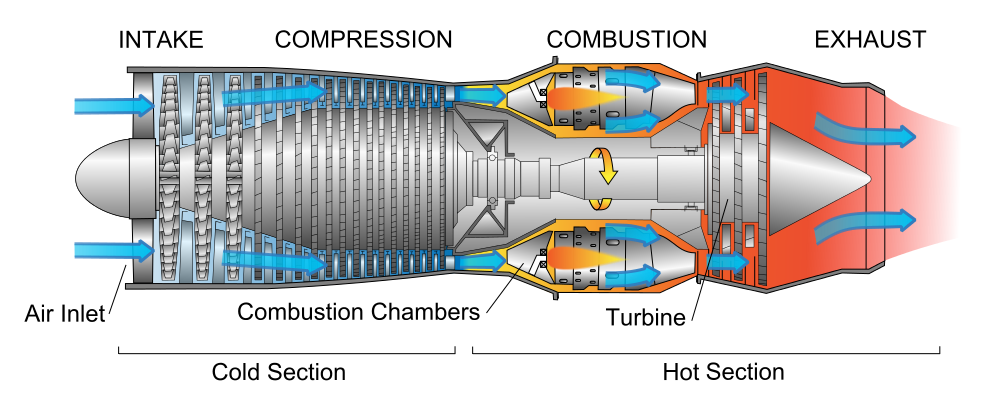Free Courses Sale ends Soon, Get It Now


Free Courses Sale ends Soon, Get It Now



Disclaimer: Copyright infringement not intended.
Context
Hyderabad based Raghu Vamsi Machine Tools Private Limited, a leading player in the aerospace and Defence industry, has launched its fully indigenous Micro Turbojet Engine “INDRA RV25: 240N” in alignment with the Atma Nirbhar Bharat.
Details
Introduction to Turbojet Engines
Components and Working Principle
Air Intake
Compressor
Combustion Chamber
Turbine
Exhaust Nozzle
Advantages
Limitations
Applications
Introduction to Engines
Types of Engines
Internal Combustion Engines
Gas Turbine Engines
Steam Engines
Stirling Engines
Rocket Engines
Working Principles
Internal Combustion Engines
Gas Turbine Engines
Other Engine Types
Conclusion
Turbojet engines have played a pivotal role in the development of aviation, enabling high-speed flight and military superiority. While newer engine types like turbofans have largely supplanted them in commercial aviation, turbojet engines remain essential for certain military and specialized applications, with ongoing research aimed at enhancing their performance, efficiency, and environmental sustainability.
|
PRACTICE QUESTION Q. Compare and contrast the working principles of Internal Combustion Engines, Gas Turbine Engines, and Turbojet Engines. (150 words) |
© 2024 iasgyan. All right reserved